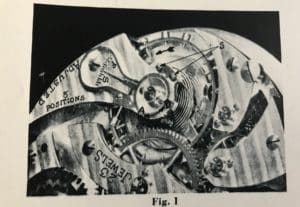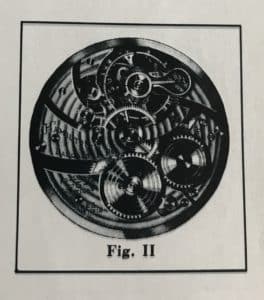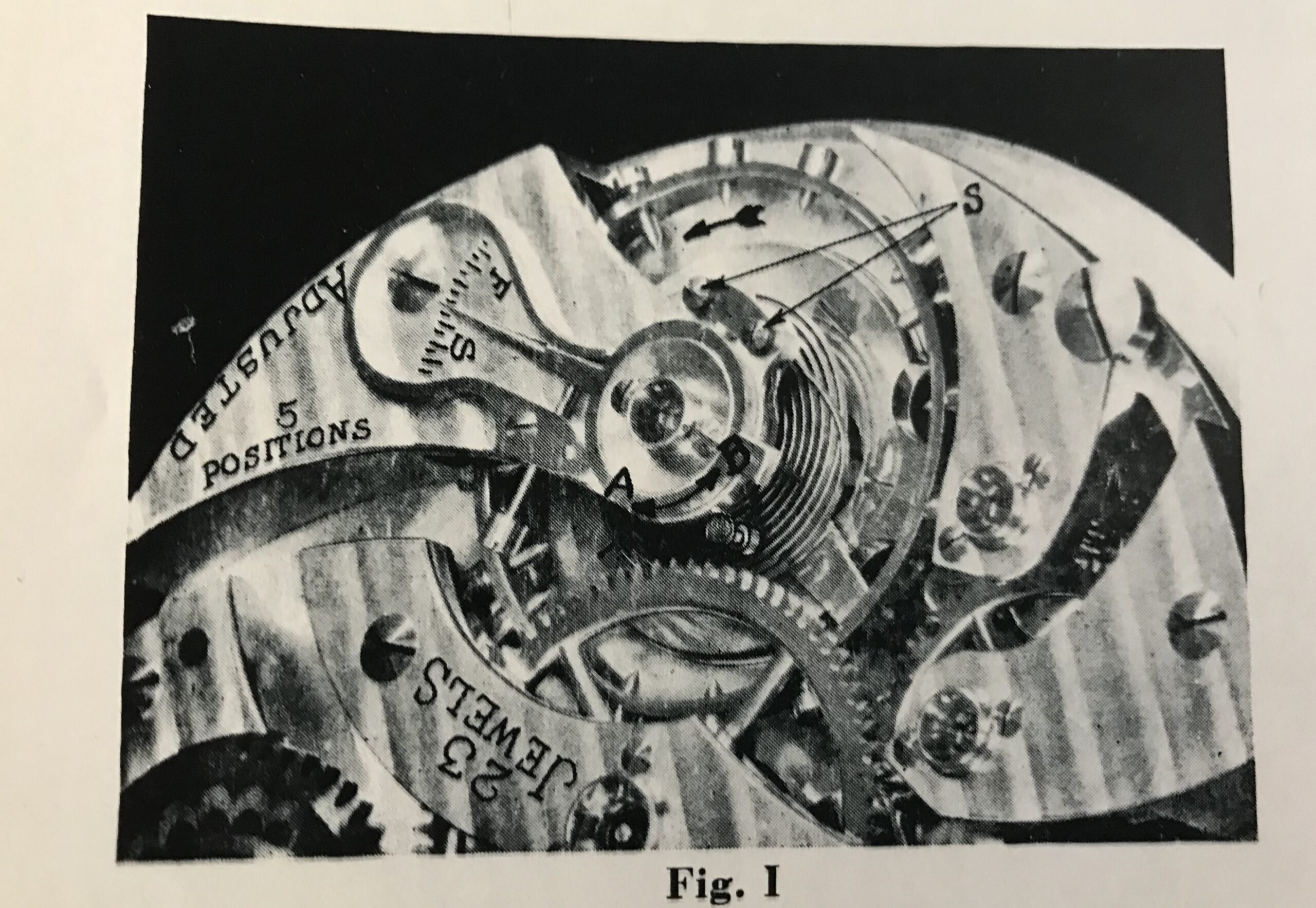The Hamilton floating stud principle for adjusted watches, adopted many years ago makes possible hairsping replacing without recentering and relevling.
To remove the balance and hairsping, unscrew the two stud cap screws (s) just enough to release the stud before unscrewling the cock screw. (If the watch is to be washed, remove these two screws entirely). Do not pick the stud out from under the cap as this will pit a short kink in the hairspring at the regulator pins, and cause bad regulation when replaced. Lift the balance cock up and away from the movement so that the balance will not catch on the center wheel adn stretch the hairspring. The balance is now suspended by the hairspring. By tilting the cock toward the stud side, the stud will fall out.
When the hairspring has been staked on the balance staff in the proper location, and the balance and hairspring are ready to be replaced in the watch, pick up the balance by the arm or rim, placing the balance with the jewel pin in the slot of the fork. Move the balance around so that the stud is within the ark A B (as indicated in Figure I) where there is no chance of catching the overcoil in the regulator pins or the stud under the balance cock. With the balance in this position, screw on the balance cock and adjust the endshake. If the stud cap has been removed, replace it, turning in the screws only part way.

The stud floats back and forth within Are A B. Now, with the forefinger of the hand that is holding the movement, swing the balance in the direction as indicated by the arrow. Holding the stud with the tweezers, place it under the cap, keeping the spring on the outside of the regulator pins. Then tip the hairsping between the regulator pins and swing the balance back until the jewel pin and fork are in neutral position and the hairsping is free between the regulator pins. It is always well to place the overcoil between the regulator pins before screwing down the stud cap screws. Holding the balance in this position, tighten the two stud cap screws.
Provided the hairspring has been leveled before and the overcoil has not been pulled out of shape in taking the balance out of the watch, the hairspring will not have to be leveled or circled. Neither will it be necessary to mainpulate the regulator pins.
The new twelve size movements, grades 912, 916, 918, 902, 904, 922, should be held in the position shown in Figure II when screwing down the stud cap. That is, with the balance on the side away from you. In putting the balance in the watch the stud should be floating in the space between the center wheel and the cock, not between the stud cap and regulator pins. By keeping the stud in this position it is much easier to handle without injuring the overcoil.

Some types of studs may be swung into place when the balance is in the watch, while there are still other types which must be placed in the balance cock and fastened before placing the balance in the watch. But the Hamilton floating stud, as illustrated here, has proven the best for frequent removal and replacment without disturbing previous adjusments.






